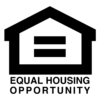Maslow’s Hierarchy Of Needs & Its Use In Nursing
Only a healthy mind can lead to a healthy body, or equally that only a healthy body can generate or nurture a healthy mind. Its most general practice is to convey the hierarchy of needs: with physical and mental health at the core. Maslow’s hierarchy of needs was formed in 1943 by psychologist Abraham Maslow to explain and categorize things people need to experience self-actualization. Maslow’s hierarchy is created to organize primary life priorities, assisting people in understanding how to address physical, mental, psychological, and emotional needs. Needs at a low level down in the hierarchy must be satisfied before people can attend to needs higher up. Failure to meet one’s needs at the lower levels of the pyramid will disrupt the ability to build later capabilities, such as enriching their self-esteem. Maslow’s hierarchy of needs is a motivational theory in psychology containing a five-tier model of individual needs. From the bottom of the hierarchy upwards, these needs are: physiological (food and clothing), safety (job security), love and belonging needs (friendship), esteem, and self-actualization. Our most essential need is for physical survival, and this will be the first thing that inspires our behavior. Once that level is fulfilled the next level up is what motivates us, and so on.
The original hierarchy of needs five-stage model includes:
1. Physiological needs – these are biological requirements for human survival, e.g., air, food, drink, shelter, clothing, warmth, sex, and sleep.
If these needs are not accomplished the human body cannot function optimally. Maslow deemed physiological needs the most important as all the other needs become secondary until these needs are met.
2. Safety needs – once an individual’s physiological needs are met, the needs for security and safety become relevant. People want to experience order, predictability, and control in their lives. These needs can be fulfilled by the family and society (e.g., police, schools, business, and medical care).
For example, emotional security, financial security (e.g., employment, social health), law and order, freedom from fear, social stability, property, health, and happiness (e.g., safety against accidents and injury).
3. Love and belongingness needs – after physiological and safety needs have been achieved, the third level of human needs is social and involves feelings of belongingness. Belongingness refers to a human emotional need for personal relationships, connecting, and being part of a group.
Examples of belongingness needs include friendship, intimacy, trust, acceptance, receiving and giving affection, and love.
4. Esteem needs– the fourth level in Maslow’s hierarchy and includes self-value, accomplishment, and respect. Maslow classified esteem needs into two categories: esteem for oneself (dignity, achievement, skill, independence) and the need for respect from others (e.g., status, prestige).
Maslow indicated that the need for respect or reputation is most important for children and adolescents and precedes real self-esteem or dignity.
5.) Self-actualization needs– Self-actualization describes the fulfillment of your full potential as a person. Sometimes called self-fulfillment needs, self-actualization needs occupy the highest spot that is on Maslow’s pyramid.
People may realize or focus on this need very specifically. An example of that may be, that one individual could have a strong yearning to become a perfect parent. In another, the desire may be conveyed economically, academically, or athletically. For others, it may be expressed creatively, in paintings, drawings, or innovations.
Maslow’s theory has been adopted into many settings over the years such as schools, workplaces, hospitals, and care centers just to name a few. The nursing process that began in 1958, and is still used today, encompasses Maslow’s Hierarchy of Needs for diagnosis by helping nurses understand their priorities when caring for a patient and conducting care plans.
The pyramid starts from the bottom to the top with the bottom level being the first/top priority in the care of patients. Nurses refer to this section as ABC (airway, breathing, and circulation). These are the primary life and death situations. A patient should have a clear airway, breathing normally, and proper blood circulation in the body.
The second tier would be safety and security. Patients should not be at risk of harm to themselves or others. Examples would be making sure the bed is at a proper height. The floor is clean and objects that may cause injury such as falls, are removed, and put away in a safe place. The call light should be within reach of the patient. Also making sure the patient’s IV isn’t tangled or wrapped and so on.
The third tier is love and belonging. Showing support to patients by showing active listening skills and having their family and friends’ input on a proper care plan. The nursing staff are their advocates and should make sure they have the best care all around.
The fourth tier is self-esteem. Nurses should always deliver proper information to the patient. If a procedure, diagnosis, or something bothers the patient and may bring them down or damper their view of themselves, nurses will want to make sure they point out their strengths and build them up.
The last tier is self-actualization where the nurse will focus on the possibilities and strengths of a patient rather than the problems to maximize their life’s fulfillment.
Maslow’s theory is a good tool to use and implement a strategy when an optimal level of overall health is the goal.
https://www.thoughtco.com/maslows-hierarchy-of-needs-4582571#:~:text=Maslow’s%20hierarchy%20of%20needs%20is,esteem%2C%20and%20self%2Dactualization. Elizabeth Hopper, September 5, 2022
https://en.wikipedia.org/wiki/Mens_sana_in_corpore_sano September 5, 2022
https://www.ncbi.nlm.nih.gov/pmc/articles/PMC8590157/ September 6, 2022
https://simplenursing.com/maslows-hierarchy-of-needs-for-nursing/ September 8, 2022


